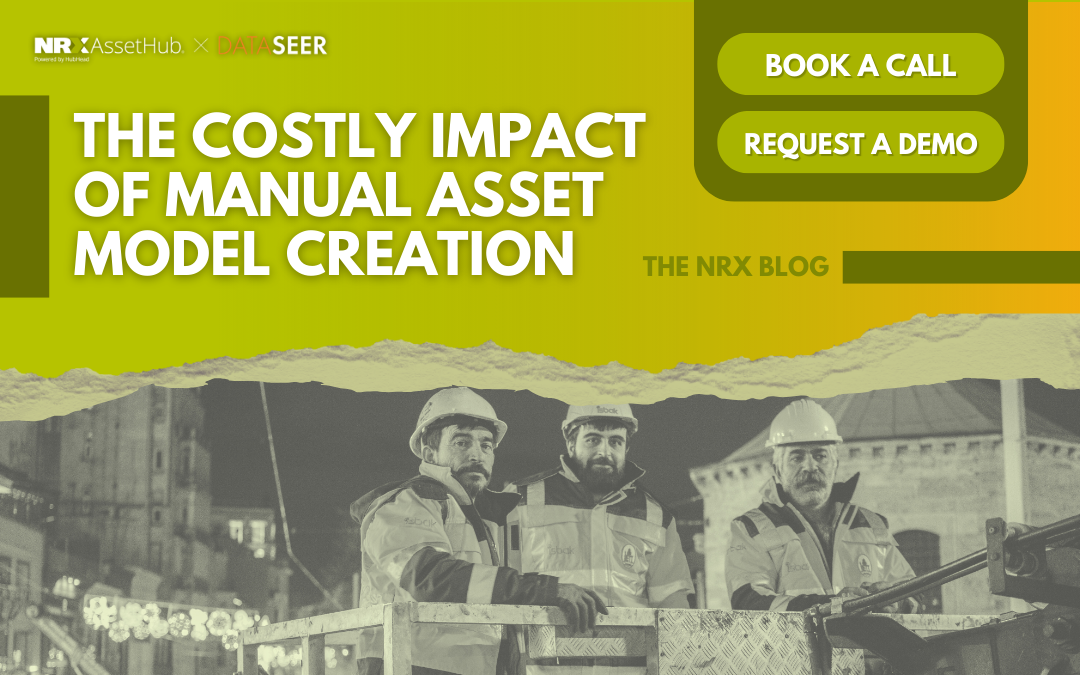Enterprise Asset Management (EAM) and Computerized Maintenance Management Systems (CMMS) are essential for modern industries, as they ensure efficient operations, maintenance planning, and asset longevity. However, a major challenge in implementing these systems is the manual creation of asset models—a time-consuming, error-prone process that introduces inefficiencies at every stage.
Studies suggest that poor asset data quality is responsible for up to 30% of an organization’s annual maintenance costs, leading to inefficiencies in operations and maintenance workflows. With outdated registries, manual data structuring, and integration challenges, organizations are losing millions in inefficiencies. These problems lead to increased rework and hindered digital transformation efforts. Yet, why is this such a persistent issue, and what are the real costs?

Outdated Asset Data: The Silent Productivity Killer
Asset-intensive industries rely on accurate, up-to-date asset registries to manage operations effectively. However, many organizations still deal with incomplete, inconsistent, or outdated asset data in their EAM and CMMS systems.
These inaccuracies create costly inefficiencies:
- Lost productivity: Maintenance teams spend extra time searching for accurate asset data instead of performing actual maintenance tasks.
- Rework and delays: Inspection and Operations & Maintenance (O&M) teams often redo tasks due to missing or incorrect data, increasing costs. Studies have proven that unplanned downtime can reduce the capacity of production by up to 20%, costing businesses approximately $50 billion each year.
- Integration roadblocks: Many organizations face major integration challenges when connecting their asset models to EAM and CMMS software such as SAP Plant Maintenance due to non-standardized data structures.
Outdated and inconsistent asset data doesn’t just slow down maintenance—it directly impacts operational efficiency, increasing costs and limiting digital transformation efforts.

The Burden of Manual Asset Model Creation
To integrate assets into an EAM or CMMS, organizations must first manually create structured asset models—a task that requires significant time and expertise. This involves:
- Identifying and structuring Functional Locations (FLOCs).
- Mapping assets to maintenance plans and preventive maintenance (PMs).
- Aligning data with digital twins and other enterprise systems.
Each of these steps requires specialized knowledge and time, creating significant bottlenecks. Research indicates that manual data structuring can delay EAM implementation by 3 to 6 months—and that’s just for initial setup.
Since these steps must be done manually, businesses face:
- Extended software onboarding times, delaying ROI.
- Higher operational costs due to skilled labour requirements.
- Limited scalability, making it difficult to adopt automation, AI, and predictive maintenance.
This manual process slows down enterprise-wide adoption of EAM systems and prevents organizations from fully leveraging automation, IoT, and AI-driven maintenance strategies.
Data Model Setup: A Roadblock to Efficiency
Before any software tool can function effectively, a proper data model setup is required. This prerequisite is often overlooked but is critical for ensuring seamless integration between assets and digital tools.
Without a standardized asset model, organizations experience:
- Software onboarding delays that lead to missed efficiency gains and slower adoption.
- Difficulties in cross-platform integration, causing siloed data environments.
- Increased costs and risks associated with data migration, as companies spend millions annually correcting and restructuring asset data.
Organizations looking to migrate or upgrade their systems often find themselves stuck in a cycle of manual data correction and restructuring, preventing them from realizing the full benefits of digital transformation.

The Bigger Picture: Lost Time, Money, and Growth Opportunities
The reliance on manual asset model creation is not just an IT or data issue—it’s a business-related problem. Organizations lose valuable time that could be spent on innovation, predictive maintenance, and cost-saving strategies. The inability to quickly onboard new assets or integrate with digital systems means falling behind in a competitive landscape. Organizations that invest in automated asset data structuring and digital twin technology experience an 18% reduction in maintenance costs and a 20% increase in operational efficiency.
Industries that depend on Enterprise Asset Management (EAM), digital twin technology, and CMMS platforms need a better solution—one that eliminates manual inefficiencies and allows businesses to scale their digital asset strategies seamlessly. So, what’s the alternative? In the next blog, we’ll explore how digital twins and automation can replace manual asset model creation, accelerating digital transformation and ensuring more accurate, integrated, and efficient asset management.
Utilizing Drawing Data for Accurate Cost Estimation

The Challenges of Table Data Extraction

The Tedious Nature of Creating Piping Lists Manually

Share this article

